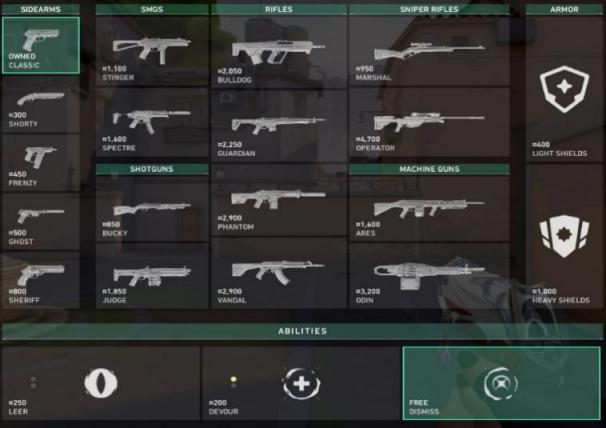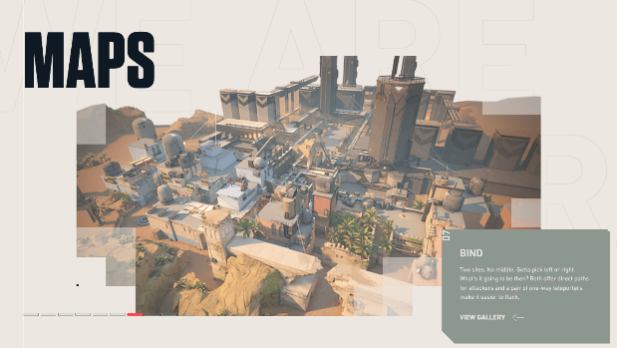1. Introduction
Valorant was developed by Riot Games, the company behind the immensely popular League of Legends. Valorant, which was launched in June 2020, rapidly garnered popularity among gamers because of its distinctive combination of tactical shooting gameplay and character-specific powers. The game draws inspiration from classic tactical shooters like Counter-Strike, while also incorporating elements from hero-based games such as Overwatch. This hybrid approach has allowed Valorant to carve out a distinct niche in the competitive gaming landscape.
Since its release, this game has fascinated gamers around the world by combining first-person shooter (FPS) elements with distinctive character attributes. Valorant transports players into a location on Earth that is set shortly, where they participate in conflicts with teams of five people on each side. This article explores the fundamental elements of Valorant, including agents, game types, weapon mechanics, map layouts, and team cooperation. Moreover, it delves into the intricacies of player identities and team strategies, examining the equilibrium between daring and cautious decision-making. The purpose of this analysis is to reveal the complexities of Valorant and elucidate their importance in the field of competitive multiplayer gaming.
The development of Valorant was driven by a desire to create a game that emphasized both strategic depth and mechanical skill. Riot Games aimed to produce a title that rewarded players for their tactical decisions and precise aim, while providing a diverse cast of characters with unique abilities to add variety and complexity to the gameplay. This combination of factors has made Valorant appealing to a wide range of players, from casual gamers to professional esports competitors.
The success of Riot Games can also be due to their dedication to cultivating a competitive ecology. Since the beginning, the firm has provided consistent updates, made adjustments to maintain fairness, and organized official tournaments and leagues to encourage the game's competitive community. Valorant's emphasis on competitive gameplay has rapidly established it as a prominent presence in the esports scene, attracting elite players and cultivating a committed fan following.
2. Key Elements of Valorant
In order to gain a thorough understanding of the game, it is crucial to initially analyze some fundamental components of the game. By exploring the roles of agents, the primary game mode, the emphasis on gunplay, and the intricacies of map design, one can appreciate how these components work together to create a rich and engaging gameplay experience.
2.1. Agents: The Backbone of Valorant’s Strategic Depth
All agents are divided into four main roles: Initiator, Sentinel, Duelist, and Controller. The choice of five agents establishes the framework for team composition and the formulation of strategic plans. Initiators demonstrate exceptional proficiency in instigating confrontations and impeding adversary locations by utilizing crowd management and area denial skills. Sentinels focus on defensive tactics, providing utility for protecting teammates and controlling map territory. Duelists are frontline combatants with offensive abilities to secure kills and maintain map dominance. Controllers have the ability to control and manipulate the map, facilitating strategic positioning and coordinated execution of tactics.
The strategic depth provided by these agents is immense. Each role offers a different approach to the game, encouraging players to think critically about their team composition and how best to utilize their agents' abilities. For example, an Initiator might use their abilities to disrupt enemy defenses and create openings for their team, while a Sentinel might focus on holding key areas and providing support to their teammates. This variety in roles ensures that every game of Valorant is unique, with different strategies and tactics coming into play depending on the agents chosen.
2.2. Game Mode: Search and Destroy
Valorant's primary game mode, Search and Destroy, is the cornerstone of its competitive gaming experience. In this mode, one team takes on the role of attackers, tasked with planting bombs (called "spikes") at designated bomb sites, while the opposing team defends the sites by killing all attackers or attempting to defuse the spikes. The game is played as a series of rounds, and the team that first gets 13 rounds wins the match. Teams take turns in offensive and defensive roles after the first 12 rounds.

Figure 1: Defusing the spike
Search and Destroy's structure promotes strategic depth and tactical decision-making. Teams must carefully plan their approach based on map layout, agent composition, and economic considerations. Successful execution requires coordination, communication, and adaptability as teams deal with complex map controls, objective gameplay, and engagement strategies.
This mode emphasizes the importance of both individual skills and team coordination. Each round is a test of strategy and execution, with teams needing to balance their economic resources, manage their agents' abilities, and adapt to the evolving tactics of their opponents. The dynamic nature of Search and Destroy ensures that players are constantly challenged, requiring them to think on their feet and make quick decisions to outmaneuver their opponents.
2.3. Gun-play and Tactics: Precision and Strategy in the Battle
Valorant puts a heavy emphasis on precise gunplay and strategic positioning, turning encounters into subtle dances of skill and strategy. Each round begins with players purchasing weapons and equipment. Thus, using in-game currency becomes another challenge. This currency is earned through kills, objective games, and round wins. If a team suffers continuous failure, they will also get a currency bonus.
The economy system introduces strategic considerations, as players must decide whether to invest in powerful weapons and abilities to make an immediate impact or to conserve resources for future turns. This dynamic adds depth to the gameplay, as teams must coordinate their purchases and adjust their strategies based on the game's changing economics.

Figure 2: The store interface
Gun-play in Valorant is designed to reward precision and tactical thinking. The game's weapons have distinct recoil patterns and handling characteristics, requiring players to master their chosen arsenal to perform effectively. This emphasis on skill-based mechanics ensures that players are rewarded for their dedication and practice, while the tactical considerations of weapon and ability purchases add an additional layer of strategy to each round.
2.4. Map Design: Creating a Strategic Battlefield
Maps in Valorant are carefully designed to promote strategic gameplay and diverse play styles. Each map has multiple paths, choke-points, and locations, providing opportunities for offense and defense. Understanding the map layout and controlling key areas are critical to success as teams compete for map control and strategic positioning.
Additionally, map design affects agent selection and tactical decisions. Certain agents may perform well in specific map environments. Players must use their knowledge of map layout, line of sight, and covers to gain tactical advantages and outwit their opponents.
|
|
Figure 3: The map “Icebox” | Figure 4: The map “Bind” |
The variety in map design ensures that each game feels fresh and challenging. Players must adapt their strategies to the unique features of each map, learning the best positions for ambushes, the optimal paths for quick rotations, and the key areas to control for strategic advantages. This constant adaptation keeps the gameplay engaging and forces players to continually refine their tactics.
2.5. Team Coordination: The Essence of Competitive Success
The core of Valorant's gameplay is teamwork and coordination. Effective communication and collaboration are critical to the victory of each game. Teams must coordinate their agent capabilities, synchronize their actions, and make split-second decisions based on changing situations.
Moreover, team coordination is not limited to in-game actions but also includes pre-game planning, in-game analysis, and overall strategy development. Successful teams cultivate a culture of communication, trust, and mutual support to maximize their collective potential and achieve success on the battlefield.
Team coordination in Valorant is essential for success. Each agent's abilities are designed to complement those of their teammates, creating opportunities for synergistic plays and coordinated strategies. Teams that communicate effectively and work together are often able to outmaneuver and outplay their opponents, demonstrating the importance of collaboration and teamwork in achieving victory [1].
3. The Psychology of Risk and Safety in Valorant
The psychology of risk and safety permeates every aspect of Valorant gameplay. The psychology of risk and safety influences player behavior, decision-making, and emotional responses, providing a glimpse into the realm of psychology. Risk perceptions are determined by factors such as the probability of success and the potential consequences of failure, thus guiding strategic choices and engagement tactics of participants [2].
Loss aversion, a principle of behavioral economics, causes participants to prioritize minimizing losses over maximizing gains. It affects players’ economic decision-making and risk-taking behavior. In Valorant, players may exhibit loss aversion by being more cautious when risking valuable in-game resources (e.g., health, weapons, and abilities) or when faced with the prospect of losing a round or match.
The balance between risk and safety is a constant consideration for players. The perceived risks and potential rewards of each action influence the decision to engage in combat, use abilities, and retreat. This dynamic creates a complex interplay of decision-making that adds depth to the gameplay and challenges players to think critically about their choices [3].
3.1. Enhancing Social Connections
Many people, both friends and strangers, use Valorant to meet up online. Today, many college students may feel alone because they are learning from home or because of the stress of school life. This is why it’s so important to have a place to connect with other people. Students can make more friends by working together with partners from around the world. This can make them feel less lonely and more socially satisfied.
Research has shown that online gaming can foster social interactions and build a sense of community among players. According to Cole and Griffiths, massively multiplayer online games (MMOs) provide opportunities for social interaction and the development of friendships [4]. In Valorant, players work together in teams, communicating and coordinating their actions to achieve common goals. Especially for those who may feel isolated due to remote learning or other factors, this collaborative environment can alleviate feelings of loneliness and enhance social satisfaction.
3.2. The Reasons that Players Cannot Stop Playing First Person Shooters
Valorant, like many first-person shooters (FPS), captivates players by immersing them in fast-paced, decision-making scenarios. As Lennart Nacke, the director of the Games and Media Entertainment Research Laboratory at the University of Ontario Institute of Technology, explains, "Video games are essentially about decision-making. First-person shooters put these tasks on speed. What might be a very simple decision if you have all the time in the world becomes much more attractive and complex when you have to do it split second" [5]. Technological advances have made modern FPS games, such as Call of Duty and the Battlefield series, far more immersive, allowing players to lose their own identities in the game.
Furthermore, it isn't just the first-person perspective that creates this sense of flow; the act of shooting itself is compelling. Nacke noted that the departure from our usual routines, the intense scenarios that are not typically encountered, make first-person shooters especially captivating. We may not necessarily desire to engage in violence in reality; rather, we experience repressed emotions and impulses that require release [5]. Modern life, with its sedentary and often monotonous routines, leaves many craving the adrenaline rush and decision-making challenges that FPS games provide. “If you look at it in terms of our evolution, most of us have office jobs. We’re in front of the computer all day. We don’t have to go out and fight a tiger or a bear to find our dinner. But it’s still hardwired in humans. Our brain craves this kind of interaction, our brain wants to be stimulated. We miss this adrenaline-generating decision-making [5].”
This insight into why FPS games are so engaging helps explain Valorant's popularity. The game's combination of rapid decision-making, strategic depth, and social interaction creates a compelling experience that keeps players coming back for more.
3.3. Adapt and Learn: The Path to Mastery
Over time, players in Valorant adjust their risk perceptions and safety-seeking behaviors through experience, feedback, and reflection. Successful outcomes reinforce effective strategies and risk-taking behaviors, while failures promote opportunities for adjustment and learning. As players gain proficiency, they develop a nuanced understanding of risk-reward tradeoffs, allowing them to make more informed decisions and predict their opponents' actions [6].
The process of adaptation and learning in Valorant mirrors broader principles of skill acquisition and mastery. As players encounter different scenarios and challenges, they refine their strategies and improve their abilities. This iterative process of learning and improvement is a key aspect of what makes competitive gaming so engaging and rewarding.
4. Conclusion
In conclusion, Valorant demonstrates the complexity of competitive multiplayer gaming. Incorporating strategic depth, tactical precision, and dynamic teamwork enhances the experience. Valorant offers players ample opportunity for challenge and discovery with its varied agent roster, strategic game types, precision gunplay, meticulously crafted levels, and a strong focus on teamwork.
The psychological study of risk and safety in Valorant provides valuable insights into the cognitive and emotional processes that influence player’s behavior and their decision-making ability. The interplay between risk perceptions, loss aversion, safety-seeking behavior, and risk-taking tendencies creates a complex relationship that influences strategic decision-making and tactical actions.
As players navigate the complexities of Valorant, they embark on a journey of adaptation, learning, and mastering the game, refining their abilities and strategies to achieve competitive success. Through analysis and reflection, players gain a deeper understanding of the mechanics and dynamics of the game, promoting their growth and development both inside and outside the game.
Essentially, Valorant goes beyond just entertainment and becomes a platform for adventure, discovery, and personal growth. As the interactive experiences in the gaming industry progress, engaging with games like Valorant enhances our comprehension of human behavior and cooperation in digital settings, contributing to the exploration of new ideas and advancements.
References
[1]. Reeves, B., & Read, J. L. (2009). Total Engagement: Using Games and Virtual Worlds to Change the Way People Work and Businesses Compete. Harvard Business Press.
[2]. Reinecke, L., & Trepte, S. (2014). The social side of gaming: How playing online computer games creates online and offline social support. Computers in Human Behavior, 28(3), 832-839.
[3]. Yee, N. (2006). The psychology of massively multi-user online role-playing games: Motivations, emotional investment, relationships and problematic usage. In R. Schroeder & A. Axelsson (Eds.), Avatars at Work and Play: Collaboration and Interaction in Shared Virtual Environments (pp. 187-207). Springer.
[4]. Cole, H., & Griffiths, M. D. (2007). Social interactions in massively multiplayer online role-playing gamers. CyberPsychology & Behavior, 10(4), 575-583.
[5]. Nacke, L. (2020). Why gamers can't stop playing first person shooters. In The Atlantic. https://www.theatlantic.com
[6]. Kahneman, D. (2011). Thinking, Fast and Slow. Farrar, Straus and Giroux.
Cite this article
Xu,Y. (2024). Applications of Psychological Principles in Game Design: Unveiling the Dynamics and Psychology of Valorant. Lecture Notes in Education Psychology and Public Media,62,63-68.
Data availability
The datasets used and/or analyzed during the current study will be available from the authors upon reasonable request.
Disclaimer/Publisher's Note
The statements, opinions and data contained in all publications are solely those of the individual author(s) and contributor(s) and not of EWA Publishing and/or the editor(s). EWA Publishing and/or the editor(s) disclaim responsibility for any injury to people or property resulting from any ideas, methods, instructions or products referred to in the content.
About volume
Volume title: Proceedings of the 5th International Conference on Education Innovation and Philosophical Inquiries
© 2024 by the author(s). Licensee EWA Publishing, Oxford, UK. This article is an open access article distributed under the terms and
conditions of the Creative Commons Attribution (CC BY) license. Authors who
publish this series agree to the following terms:
1. Authors retain copyright and grant the series right of first publication with the work simultaneously licensed under a Creative Commons
Attribution License that allows others to share the work with an acknowledgment of the work's authorship and initial publication in this
series.
2. Authors are able to enter into separate, additional contractual arrangements for the non-exclusive distribution of the series's published
version of the work (e.g., post it to an institutional repository or publish it in a book), with an acknowledgment of its initial
publication in this series.
3. Authors are permitted and encouraged to post their work online (e.g., in institutional repositories or on their website) prior to and
during the submission process, as it can lead to productive exchanges, as well as earlier and greater citation of published work (See
Open access policy for details).
References
[1]. Reeves, B., & Read, J. L. (2009). Total Engagement: Using Games and Virtual Worlds to Change the Way People Work and Businesses Compete. Harvard Business Press.
[2]. Reinecke, L., & Trepte, S. (2014). The social side of gaming: How playing online computer games creates online and offline social support. Computers in Human Behavior, 28(3), 832-839.
[3]. Yee, N. (2006). The psychology of massively multi-user online role-playing games: Motivations, emotional investment, relationships and problematic usage. In R. Schroeder & A. Axelsson (Eds.), Avatars at Work and Play: Collaboration and Interaction in Shared Virtual Environments (pp. 187-207). Springer.
[4]. Cole, H., & Griffiths, M. D. (2007). Social interactions in massively multiplayer online role-playing gamers. CyberPsychology & Behavior, 10(4), 575-583.
[5]. Nacke, L. (2020). Why gamers can't stop playing first person shooters. In The Atlantic. https://www.theatlantic.com
[6]. Kahneman, D. (2011). Thinking, Fast and Slow. Farrar, Straus and Giroux.











